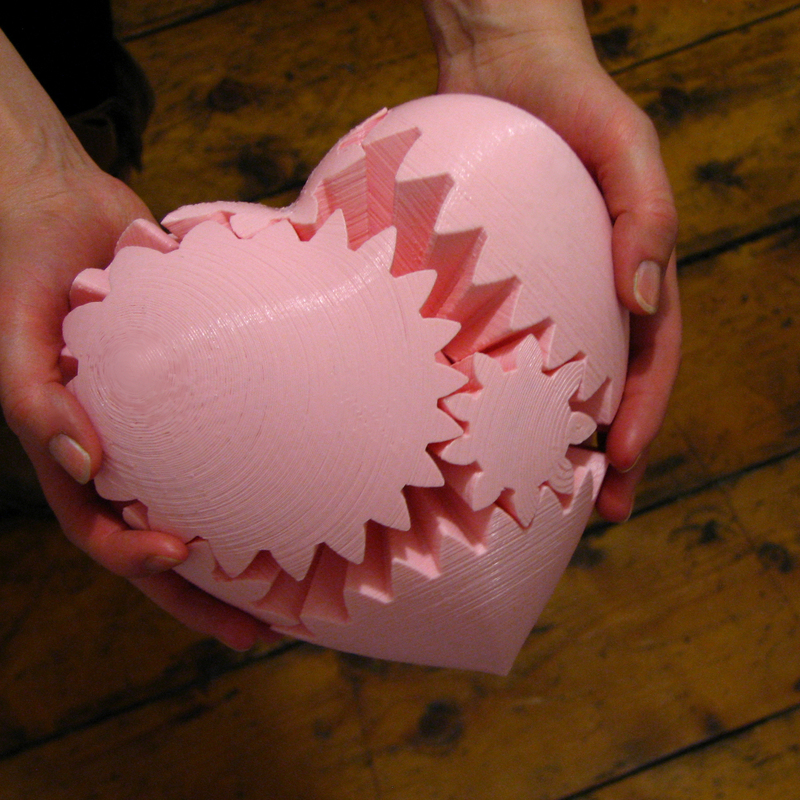
3D printed gear heart. Courtesy of Thingiverse.
Latest News
March 15, 2012
Indian technical engineer Balaji Tammabattula says he has created a system that can scan and take photographs of real-world objects simultaneously and then translate that image directly into a 3D printer-friendly format, no software required.
I’ll get into more specifics in a minute, but first let’s think about what this development could mean for 3D printing. One of the biggest hurdles with bringing 3D printers to your average citizen is the complexity of CAD programs. I can already hear some of you saying that plenty of programs exist that can perform the functions of CAD programs while being easy enough for a novice to use.
That argument is probably valid for a large number of tech savvy people, but if you want to see 3D printers in every home, they have to be easy enough for people who still believe the modem is the problem when their Internet goes down. My mom can barely use email (no, I’m not exaggerating) and she is part of a large consumer group, namely the baby boomers.
Maybe half the people who own computers could figure out how to use one of the simpler CAD-lite programs. Maybe not. The point is, it’s even better for 3D printing adoption if they don’t have to learn. That is the promise of developments like this one.
I digress. What Tammabattula has done is create a system that uses multiple cameras simultaneously taking pictures of the same object from multiple angles. Alongside the camera is a 3D scanner to pick out smaller details. This all takes place in seconds. Push a button and create a 3D printable file.
All 3D printers require the item to be made from an intricate and complicated digital wireframe file. Naturally, you need a great deal of technical knowledge in order to produce these. My invention does away with this, instead printing directly from a photograph, by means of a 3D camera. This means anyone can use it! – Balaji Tammabattula
The sticking point may be the price tag attached to the system. Tammabattula says he wants to manufacture his invention in the U.S., but at the moment he is working with the Indian government. Until we know how much, it’s hard to predict what sort of impact the system could have on 3D printing.
I failed to find any video that covers the system, but below you’ll find an interesting video that discusses the future of 3D printing with representatives from 3D Systems and MakerBot.
Sources: San Francisco Chronicle, PRWeb
Subscribe to our FREE magazine, FREE email newsletters or both!
Latest News
About the Author
John NewmanJohn Newman is a Digital Engineering contributor who focuses on 3D printing. Contact him via [email protected] and read his posts on Rapid Ready Technology.
Follow DE






